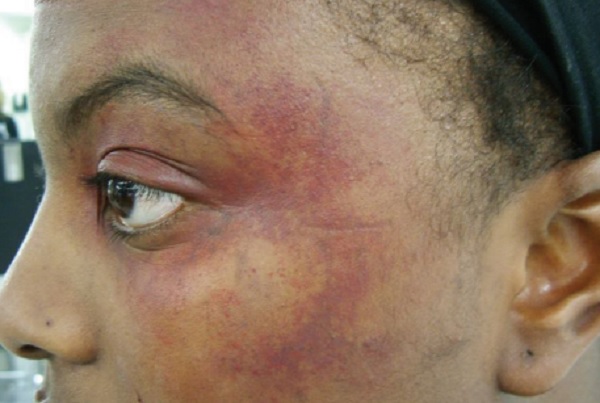
But some cases require a doctor
Kampala, Uganda | THE INDEPENDENT | A bruise is a common skin injury that results in a discoloration of the skin. Blood from damaged blood cells deep beneath the skin collects near the surface of the skin, resulting in what we think of as a black and blue mark. People typically get bruises when they bump into something or when something bumps into them.
Although bruises happen to everyone, some bruising may be a red flag for an underlying medical problem or nutritional deficiency. In this case, it is advisable to see a doctor.
Symptoms to see a doctor about include: bruises that appear without an obvious injury, frequent bruising, bruising very easily, bruises that suddenly appear after taking a new medication or supplement, bruises in strange places, such as the back or abdomen.
Women tend to bruise more than men, and older people bruise more than younger people.
Antibiotics, blood thinners, and asthma medications also cause increased bruising in some people. However, a person should not stop taking a medication without first speaking with their doctor.
For the rest, although there is no magic trick to prevent or erase them, the good news is, most bruises are harmless, and there are home remedies to reduce their appearance and help them heal faster, especially in children.
Home remedies
R.I.C.E.
R.I.C.E. stands for rest, ice, compression, and elevation. Many people who have had surgery or have sprains or strains employ this tactic to aid recovery, but it has benefits for bruising as well.
These actions aim to temporarily reduce blood flow to the injured area, which can help prevent some swelling and bruising.
Elevating and resting the area, as well as applying ice for up to 20 minutes per hour and using a light compression bandage, can help decrease the blood flow and inflammation that contribute to bruising.
Following R.I.C.E. as soon as possible after an injury and throughout the healing process can also decrease pain.
Bruise-healing diet
A person’s diet can have an impact on all areas of health, including how their injuries and bruises heal. Certain foods can strengthen the body’s blood vessels, which may minimise bruising.
Other foods can help keep the body’s skin and tissues strong and pliable. Eating a healthful, balanced diet that includes the following foods may help prevent or heal bruises:
• Pineapple. Eating fresh pineapple gives the body a natural dose of bromelain, which may help the bruise heal faster.
• Fruits with natural quercetin; an antioxidant. Foods with high amounts of quercetin include apples, citrus fruits, red onion, dark-colored berries and cherries, and leafy green vegetables.
• Citrus fruits. One study found that citrus flavonoids significantly improved bruising in elderly people. Citrus fruits include oranges, tangerines, and lemons.
• Foods with vitamin K. A diet that includes vitamin K will prevent deficiency and may help a person bruise less. Good sources include spinach, broccoli, lettuce, soybeans, and strawberries.
• Lean protein. Fish, poultry, and lean meat provide protein to help strengthen capillaries. Avoid sources of protein with high amounts of saturated fat and cholesterol, such as hamburger or fried meats.
• Zinc-rich foods. Zinc helps the body heal wounds and tissues. Good sources of zinc include pumpkin seeds, and beans.
Essential oils
A person can create a soothing cold compress for injuries with a cool washcloth and a few drops of rosemary and lavender essential oils applied to the cloth.
It is important to dilute oils with carrier oil or a lotion before putting directly on the skin unless directed otherwise. Using essential oils without diluting them can cause skin irritation.
****
Source: Internet
 The Independent Uganda: You get the Truth we Pay the Price
The Independent Uganda: You get the Truth we Pay the Price


